The Eiders are a group of unique seagoing ducks, or seaducks. They have beautiful plumage and oddly-shaped bills. Scientists place all three species in the same taxonomic genus, Somateria. The three species are the Common Eider, the King Eider, and the Spectacled Eider. Read on to learn about the Eider.
Description of the Eider
Though each species is different, all three have primarily black and white plumage, or feathers. The feathers on their sides and tails are black, and the feathers on the rest of their bodies are bright white.
Some of these birds also have brightly colored feathers or faces. Their bills have unusually wide and narrow bases, like the keel of a sailboat. Most species measure about a foot and a half or two feet long, and weigh four or five pounds.
Interesting Facts About the Eider
Eiders are interesting birds with starkly contrasting plumage. Learn about their different traits and behaviors below.
- Birds of a Feather – In some species, mothers group together to protect their offspring. These groups, known as “crèches,” sometimes number over 100 birds! Staying in a group helps the females keep a close lookout for predators.
- “Deadbeat” Dads – It’s lucky that the females band together, because the males don’t stick around to protect the brood. However, this isn’t unusual for many duck species, including mallards!
- Popular Prey – Regardless of the species, Eiders make fine meals for many different types of animals. Some of the different predators of these ducks include Arctic foxes, humans, peregrine falcons, snowy owls, jaegers, gulls, and more.
- Young and Inexperienced – Despite the multitude of predators, once an Eider reaches adulthood it has a 94% chance of surviving the year. However, nearly half of the youngsters do not survive their first year. Predators take advantage of young and inexperienced birds.
Habitat of the Eider
The three different species of these birds live in several different types of habitats. Their habitat choice also changes based on the season. During the breeding season they live on or near islands, in tundra habitat, along rocky coastlines, and near lakes, and ponds.
Outside of the breeding season, some species live in oceanic water close to shore. Researchers do not have extensive information about the non-breeding habitats of some species of these seaducks.
Distribution of the Eider
Commons breed along the northern coasts of North America, Europe, and northeast Asia. During the wintertime they migrate to areas slightly south of their breeding range.
Kings also breed along the northern coasts of North America, but they also breed along the northern coast of Asia as well. Finally, the Spectacled species ranges along the coast of Alaska and into northeast Asia.
Diet of the Eider
Depending on the species, Eiders are either carnivorous or omnivorous. All three species feed on invertebrates, but the Spectacled species also eats plants.
Some of the different types of invertebrates that all of these ducks eat include clams, insect larvae, crabs, sea urchins, mussels, small fish, scallops, starfish, shrimp, and more. Their diets vary based on the species and the region in which they live.
Eider and Human Interaction
Because these birds breed in the Arctic circle, they do not cross paths with humans very frequently. They do come in contact with humans when they migrate for the winter. However, regardless of their direct interactions human activity indirectly impacts all Eiders.
Climate change, overfishing, and pollution all impact the Arctic breeding ranges of these birds. The IUCN lists the Spectacled Eider and the Common Eider as Near Threatened and the King Eider as Least Concern.
Domestication
Humans have not domesticated these seaducks in any way.
Does the Eider Make a Good Pet
No, Eiders do not make good pets. They are wild birds and are not friendly towards humans. In many places it is also illegal to own one as a pet.
Eider Care
In zoos and aquariums, Eiders thrive in large open-aviary style enclosures. People can walk through large aviaries, and they usually contain a number of water features, vegetation, and different bird species.
Though their exact needs vary based on the species, zookeepers usually feed these birds a variety of shellfish, shrimp, small fish, and other aquatic creatures. Some zoos that keep Eiders include St. Louis Zoo, Alaska SeaLife Center, Cincinnati Zoo & Botanical Garden, and more.
Behavior of the Eider
Unlike most species of ducks, these swim and forage in the ocean. They dive for their food, and forage along the seafloor for clams, mussels, crabs, and other invertebrates. Some live in groups known as “flocks,” while others are solitary.
Some species are social for part of the year, primarily during migration, and then live alone when they reach their wintering grounds. During the breeding season, pairs form to build nests and some species even nest in large groups known as “colonies.”
Reproduction of the Eider
During the breeding season Eiders perform elaborate displays to attract mates. The pair, or just the female in some species, builds the nest in an isolated area, or a region with tall vegetation to conceal it.
Once they have collected vegetation for the exterior, the female plucks her feathers to line the inside of the nest. She lays around four or five eggs per clutch, and incubates them for three to four weeks.
The female protects her young and leads them to food, which they capture themselves. Some females form large groups with their chicks. These groups help the mothers keep an eye out for predators. In all species, the chicks begin learning to fly when they are only a month or two old.





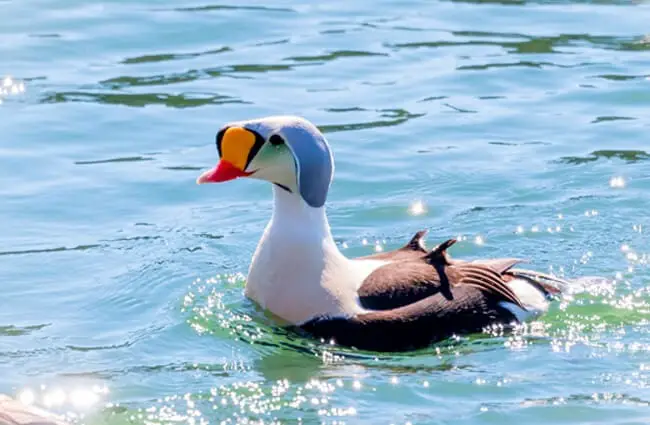
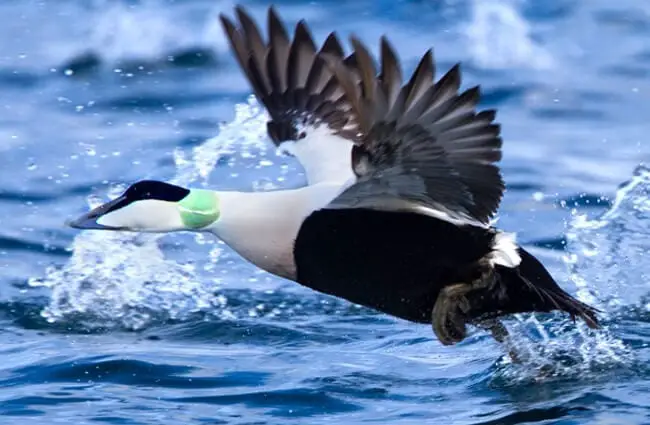
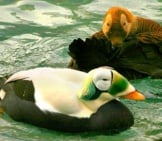
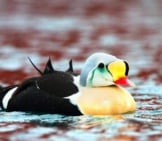


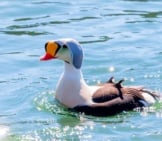
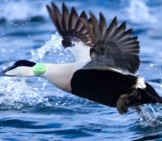
![Red Angus Closeup of a beautiful Red Angus cowPhoto by: U.S. Department of Agriculture [pubic domain]https://creativecommons.org/licenses/by/2.0/](https://animals.net/wp-content/uploads/2020/03/Red-Angus-4-238x178.jpg)












![Red Angus Closeup of a beautiful Red Angus cowPhoto by: U.S. Department of Agriculture [pubic domain]https://creativecommons.org/licenses/by/2.0/](https://animals.net/wp-content/uploads/2020/03/Red-Angus-4-100x75.jpg)

